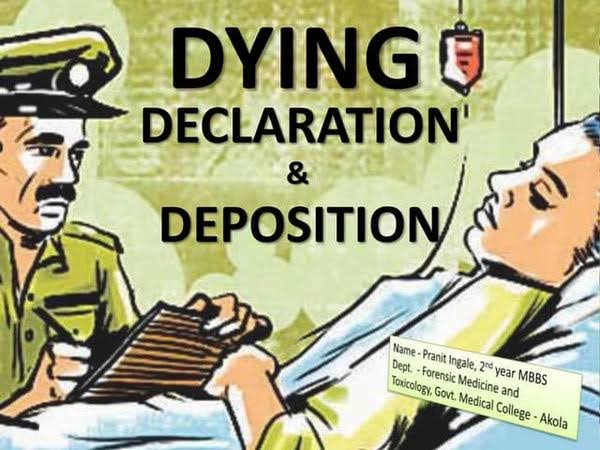1. Anil Kumar, J.Heard Sri T.N. Gupta, learned Counsel for the petitioner and Sri Rakesh Srivastava, on behalf of the opposite parties.
2. Facts in brief of the present case are that the petitioner purchased a house bearing No. 51, H.I.G. Sector E, Aliganj, Lucknow, the land area of the said house is 265 Sq. meter (covered area is 325.168 sq. meter) bounced as under:
East: H.I.G. 78.
West: 30 ft. wide Road.
North : H.I.G. 50.
South : H.I.G. 52.
Sale deed of the said house was executed and registered on 11.6.2004 (Annexure2) and the petitioner had paid stamp duty amounting to Rs. 2,50,000/ Thereafter a notice under section 47 A of the Indian Stamp Act has been issued to the petitioner by the Additional District Magistrate (Finance/Revenue) Collector, Lucknow and Naib Tehsildar, Lucknow submitted a report dated 16.4.2004 in the matter in question. As per the version of the petitioner the copy of the said report was not supplied to him but he had noted down the contents of the said report (a copy of the same been annexed as Annexure No. 5 to the writ petition). He submitted his reply/objection (Annexure No. 6) to the said report denying the averments as made in the said report, the reply/objection as submitted in paragraph Nos. 4 and 5 are as under:
"Para 4That in the site inspection carried out report submitted on 16.11.2004, it has been said that during inspection repair work was being carried out and that porch gallery floor is of stone kalegi and that in the rooms floor is old and in the ground floor they are 4 rooms, garage, kitchen, latrine bathroom. It has been further said that the covered area of ground floor is 2260 sq. fts. and of 1st floor 1610 sq. fts. Total Area = 359.67 sq. mtrs. With a mention that seeing the condition of the said it cannot be said of ''UCH SRENI (Higher Category) and that while making valuation the land value while has been correctly worked out equal to what has been shown in the registered sale deed, the value of constructed area while it is said that the same is not higher category the valuation has been made of higher category @ Rs. 4500/ per sq. mtr. In the report submitted it has not been considered that the construction is of the year 1979 in dilapidated condition and what would be the life of building. In the report submitted @ Rs. 4500/ per sq. metre on the basis of higher category the valuation has been worked out and it is said that less stamp duty of Rs. 28,500/ has been paid.
Para 5That valuation of house can only be carried out by competent valuer category and that as the same as has been assessed at the higher rates while admitting the same is not of higher category the defendants have got carried out the valuation from approved Valuers Sri Avadh Narain Dubey."
3. On 19.2.2005 the O.P. No. 2/Additional District Magistrate, (Finance & Revenue) Collector, Lucknow passed the impugned order holding therein the deficiency in stamp duty in respect of the registration of the document in question. Aggrieved by the said order the present writ petition has been filed before this Court.
4. Sri Rakesh Srivastava, learned Standing Counsel has raised a preliminary objection to the effect that against the order dated 19.2.2005 (Annexure1) passed by O.P. No. 3, petitioner has a statutory right of appeal before the appellate authority under section 56 (1A) of the Indian Stamp Act, 1899. So, the present writ petition is liable to be dismissed on the said ground.
5. Sri T.N. Gupta, learned Counsel for the petitioner in rebuttal submits that as in the present case the counter and rejoinder affidavits have been exchanged between the parties and the matter is pending since 2005 before this Court for adjudication on merit. So, keeping in view the law as laid down by this Court in the case of Roshan lal v. State of U.P. and others1 the writ petition should not be dismissed on the ground of alternate remedy of appeal available to the petitioner under the statute but shall be decided on merit.
6. From the perusal of the law as laid down by the Division Bench of this Court in the case of Roshan lal (supra) it is clear that the power under Article 226 of the Constitution is not intended to circumvent statutory procedure but it is not an absolute bar and merely a factor, which requires consideration while exercising the power. Dismissal of the writ petition on the ground of alternative remedy long after its filing and exchange of pleadings, may lead to shutting the door of alternative remedy itself. Provisions of alternah''ve remedy in many of the cases provide for limitation and in case writ petitions are dismissed after exchange of pleadings after a long time, the damage cannot be countenanced.
7. In view of the abovesaid facts, the preliminary objection raised by Sri Rakesh Srivastava, learned Standing Counsel, has no force and the same has been rejected.
8. Further, Sri T.N. Gupta, learned Counsel for the petitioner, while assailing the impugned order dated 19.2.2005 submits that the reply/objection which was submitted by the petitioner against the report dated 16.11.2004 of Naib Tehsildar which was the sole basis of passing of the impugned order has not been considered and dealt with by the O.P. No. 2 in the impugned order as such the same is arbitrary in nature cannot sustain.
9. Sri Rakesh Srivastava, learned Standing Counsel although defended the order under challenge in the present writ petition but fairly conceded the fact that the reply submitted by the petitioner in response to the report dated 16.11.2004 of Naib Tehsildar has not been considered and dealt with in a proper manner by the O.P. No. 2 while passing the impugned order in a proper manner.
10. I have heard the Counsel for the parties and gone through the record of the present case.
11. Undisputed facts of the present case are that the property in question was purchased by the petitioner vide a registered sale deed dated 11.6.2004 and at the time of registration the stamp duty paid by the petitioner was Rs. 2,50,000/ on the market value of the property amount of Rs. 24,67,000/ and the sale consideration amounting to Rs. 25,00,000/.
12. Further it is also not disputed between the parties that when the matter in respect to deficiency in the stamp duty was under consideration before the O.P. No. 2 the Naib Tehsildar had submitted a report dated 16.11.2004 to which the petitioner has submitted reply on 7.1.2005. However, the submission made on behalf of the petitioner that the copy of the said report was not been given to him has no relevancy once the petitioner has noted down the contents of the said report and filed his objection on 7.1.2005 to the said report.
13. In view of the abovesaid facts, the sole question which is to be decided in the present case is whether the reply submitted by the petitioner dated 7.1.2005 against the report dated 16.11.2004 submitted by the Naib Tehsildar which was the sole basis of passing of the impugned order has been considered and dealt with in proper and reasonable manner or not ?
14. From the perusal of the impugned order dated 19.2.2005 (Annexure1) passed by O.P. No. 2 it is crystal clear that the O.P. No. 2 neither taken into consideration nor dealt with the reply/objection filed by the petitioner against the report dated 16.11.2004 submitted by the Naib Tehsildar rather the impugned order on the said ground is a nonspeaking and unreasoned order.
15. Needless to mention herein that it is well settled law that an order passed by an authority should be a reasoned one and the objection taken by a person should be dealt with because reasons are like a live wire which connects the mind of the decision making authority and the decision given by him and if this wire/link is broken i.e. to say no reasons are given in the impugned order then it will not be possible to know as what was going in the mind of the decision making authority on the basis of which he has come to the conclusion and passed the impugned order.
16. In Breen v. Amalgamated Engg. Union, 1971 (1) All ER 1148, it was held that the giving of reasons is one of the fundamentals of good administration. In Alexander Machinery (Dudley) Ltd. v. Crabtress, 1974 (4) IRC 120 (NIRC), it was observed that "failure to give reasons amounts to denial of justice. Reasons are live links between the mind of the decision taker to the controversy in question and the decision or conclusion arrived at".
17. Reasons substitute subjectivity by objectivity. The emphasis on recording reasons is that if the decision reveals the ''inscrutable face of the sphinx'', it can be its silence, render it virtually impossible for the Courts to perform their appellate function or exercise the power of judicial review in adjudging the validity of the decision. Right to reason is an indispensable part of a sound judicial system, reasons at least sufficient to indicate an application of mind to the later before Court. Another rationale is that the affected party can know why the decision has gone against him. One of the salutary requirements of natural justice is spelling out reasons for the order made. In other words, a speaking out. The inscrutable face of the sphinx'' is ordinarily incongruous with a judicial or quasijudicial performance."
18. This Court in the case of Rajendra Singh and others v. Deputy Director of Consolidation and others, 2005 (99) RD 46, held that one of the salutary requirement of natural justice is spelling out reasons for the order made, in other words, a speaking out. The ''inscrutable face of the sphinx'' is ordinarily incongruous with a judicial or quasijudicial performance."
19. The said requirement is also in accordance with the principles of natural justice as a person against whom the impugned decision is taken should know that under what circumstances the same has been taken and as in the present case, the appellate order is a nonspeaking order and no reason has been assigned whatsoever by the opposite party No. 2 by passing the same that on what ground he had disagreed with the reply/objection submitted by the petitioner against the report dated 16.11.2004 submitted by Naib Tehsildar, so the same is violative of principles of natural justice and arbitrary in nature and cannot sustain.
20. for the foregoing reasons, the impugned order dated 19.2.2005 passed by O.P. No. 2 is set aside, the writ petition is allowed. The matter is remanded back to the O.P. No. 2/Additional District Magistrate (Finance & Revenue) Collector, Lucknow to decide afresh in accordance with law after giving appropriate opportunity of hearing to the petitioner expeditiously if possible within a period of three months from the date of production of certified copy of this order.
21. No order as to costs.

